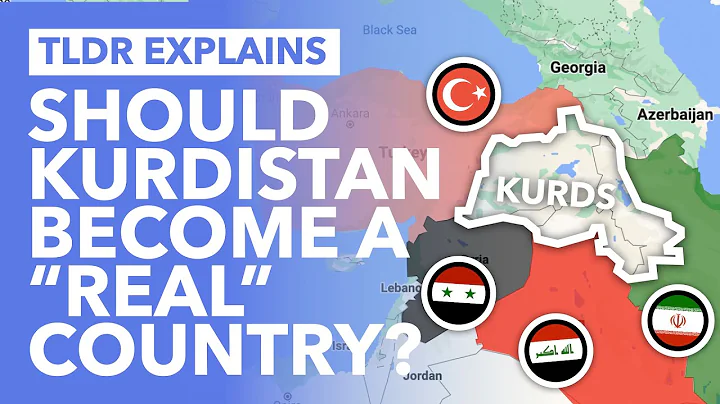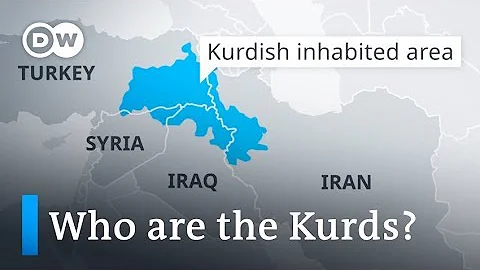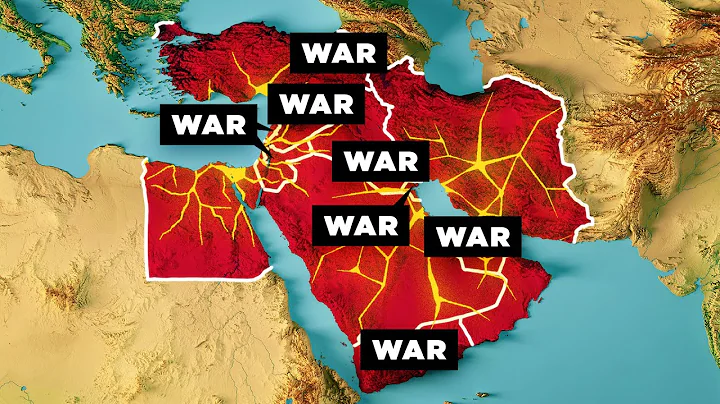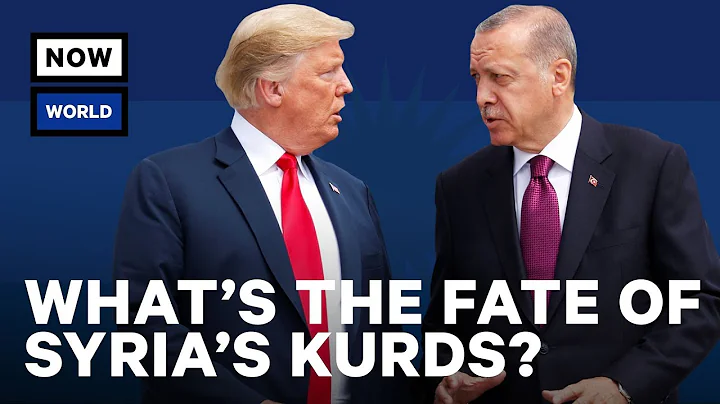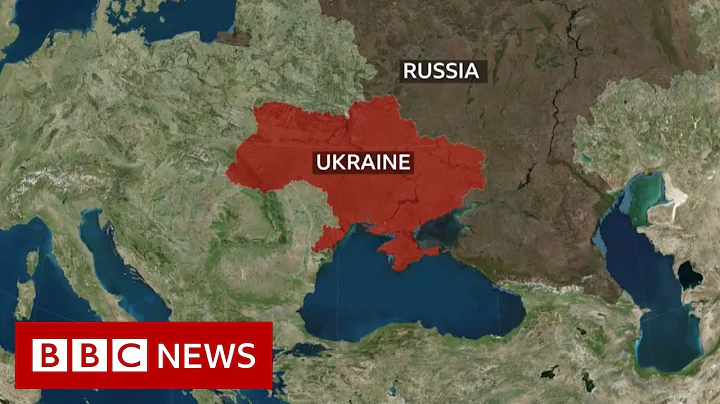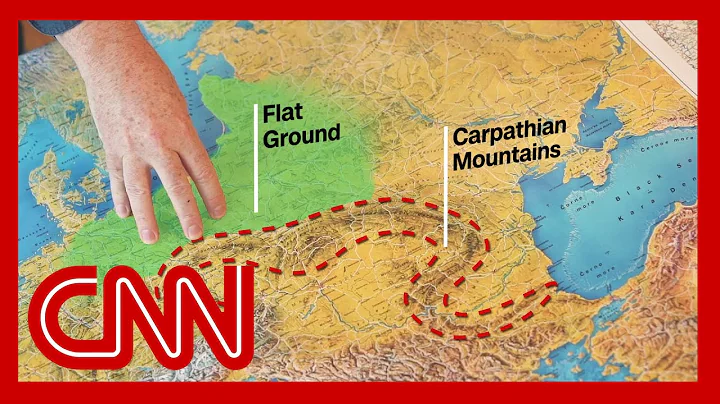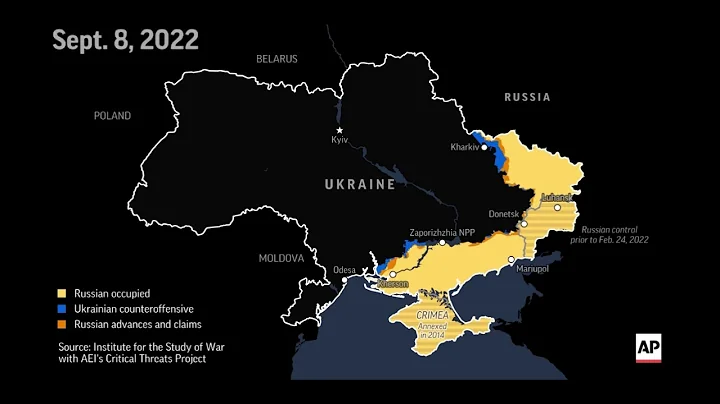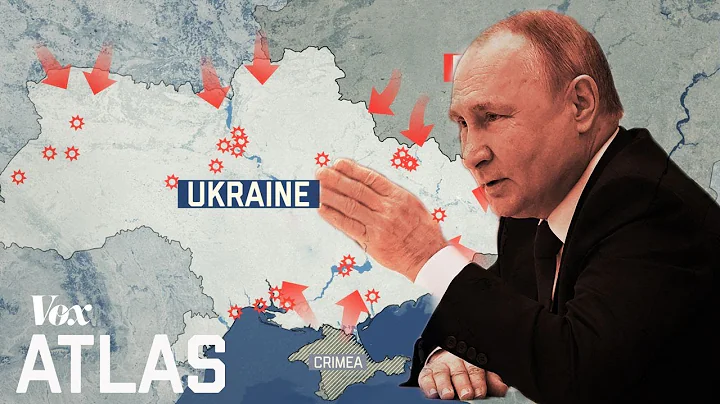
At the end of June 2022, the NATO summit was held in Madrid, the capital of Spain. The differences between Sweden , Finland (which applied to join NATO in May) and Turkey will be one of the important issues at the summit.

▲Finland and Sweden (light blue) applied to join NATO (blue)
Since Sweden and Finland's accession to NATO requires the unanimous consent of all member states. Therefore, the date for the two countries’ “EU accession” is very likely to be pushed back again and again.
The reason why Turkey rejected the applications of Sweden and Finland was because Turkey accused the two countries of providing political asylum to "PKK" militants and opponents of Turkey's current President Erdogan.

▲Turkey refuses Sweden and Finland to join NATO
Turkey not only lists the "PKK" as a terrorist organization, but has also long refused to recognize the independent national status of the Kurds.

▲The PKK, which is regarded as a terrorist organization by Turkey,
The Kurds have a total population of about 30 million, making them the fourth largest ethnic group in the Middle East after Arabs, Turks (60 million) and Persians (54 million) .
But the only difference is that the Kurds did not establish their own independent state.
Kurds are mainly distributed in four countries: Iran (the third largest ethnic group), Turkey (the second largest ethnic group), Iraq (the second largest ethnic group) and Syria (the second largest ethnic group).
Among them, there are 14 million Kurds in Turkey, accounting for nearly half of the total Kurdish population.

▲ Kurdish The main population distribution
Iran, Iraq and Syria have all recognized the Kurds as a minority in the country. Only Türkiye defines the Kurds as "mountain Turks."

▲ Kurdistan map
So why is Turkey alone not recognizing the national identity of the Kurds? Why is the PKK accused of being terrorists?
1. Ottoman Persia carved up the Kurds
Legend has it that in the 7th century BC, the Kingdom of Media was established in Central Asia. In the 6th century BC, after the Persians conquered the Kingdom of Media, some Persians and Mede tribes mixed blood to form the Kurds.
According to the research of anthropologists, the Kurds are a mixture of indigenous tribes of Iranian Plateau and Persian-speaking tribes.

▲The early Persian Empire
Kurdish and Persian are very similar, and are very different from the surrounding Turkish and Arabic.
From the 6th century BC to the 7th century AD, the Persians established a huge empire twice. Compared with surrounding ethnic groups, the Kurds have lived in mountainous areas for generations and make a living as nomads. Their economic development lags behind surrounding ethnic groups such as Persia and Persia.

▲The area where the Kurds originated, with many surrounding mountains
The Kurdish living area is located on the main route from the Persian Empire to Europe (Rome, Byzantine ). Therefore, the Kurds are destined to be dominated by surrounding powers in turn.
By the 5th century AD, the Kurdish lands were divided between the Eastern Roman Empire and Sasanian Persia.
In the 7th century AD, the Arab Empire that originated from the Arabian Peninsula destroyed Sasanian Persia. The Kurds, Persians and Turks in Central Asia under the rule of the Arab Empire converted to Islam.
Around 630 AD, Muhammad died. The Arab Empire was divided into Shia and Sunni because of the issue of succession. Most Arabs, Turks, and Kurds converted to Sunni Islam, while most Persians converted to Shia Islam.

▲The Kurds, influenced by the Arab Empire, converted to Islam
In 1258 AD, the Mongol Empire destroyed the Arab Empire. The Persians, Kurds, and Arabs were ruled by the Mongols.
The Mongols ruled here not long ago. At the end of the 13th century, the Mongols withdrew from the Middle East.
From the 7th century to the 13th century, both the Persian Empire and the Arab Empire suffered the fate of annihilation. Only the Eastern Roman Empire (Byzantium) continued its national destiny for nearly a thousand years.

▲In the Near East in the 13th century, Seljuk Turks were the predecessor of the Ottoman Empire
However, as the Mongols withdrew from Central Asia, the Eastern Roman Empire faced pressure from the Seljuk Empire (Ottoman Empire).
At the end of the 13th century, the Seljuk Turks established the Ottoman Empire in the eastern part of the Asia Minor peninsula. The Asia Minor Peninsula is regarded as the land of the Turks.
Since then, the Ottoman family has gone through a series of reforms, established a strong army, and become a military power.
In 1453, the Ottoman Empire fell to the Eastern Roman Empire. Then he went north and occupied Christian lands in Europe, forming a huge empire that spanned Europe, Asia, and Africa, encompassing different religions and multiple ethnic groups.

▲The Eastern Roman Empire was destroyed
During the 16th century, the Safavid dynasty unified Persia and established the Shiite empire-the Safavid Persian Empire. The eastern frontier of the Ottoman Empire saw competition from the Safavid Persian Empire.
The Kurdish region became the front line of competition between the Ottoman Empire and the Safavid dynasty of Persia.

▲The partition of the Ottoman Empire and the Safavid Persian Empire
After years of war, during the 17th century, Ottoman occupied most of the Kurdish residential areas, and the Persian Empire occupied a small area in the east of the Kurds.
This became the basis for the future distribution of Kurds in Türkiye and Iran.
Although Persians and Kurds have similar ethnic compositions (Persian-speaking people), the Persians mainly believe in Shia, and the Kurds belong to Sunni.
Therefore, the Kurds living in Persia were oppressed by the Persians, who forced the Kurds to move to the relatively desolate northwest region.
The Turks, the main ethnic group of the Ottomans, and the Kurds are both Sunnis and have a relatively close relationship.
In the wars from the conquest of the Eastern Roman Empire in the 15th century to the conquest of Central Europe in the 17th century, the Kurds have long been the main source of Ottoman forces and have been at the forefront.

▲The Kurdish nobles of the Ottoman Empire
In return, the Ottoman Empire adopted a certain tolerance towards the Kurds and recognized the autonomous status of its 16 principalities and 50 regions.

▲ Within the Ottoman Empire, the Kurds gained autonomy
2. The Kurdish dream of nationhood was shattered
As the main mercenary of the Ottoman Empire, the Kurds witnessed the rise and decline of the Ottoman Empire.
In 1831, with the support of Britain, France, Russia and other major powers, the Christian nation in the Ottoman territory - Greece took the lead in becoming independent.

▲Greek War of Independence
After Greece became independent, the Ottoman national policy tended to be conservative and gradually took back the autonomy of the Kurds.
In 1847, with the cancellation of the autonomy of the last Kurdish principality, the Kurds in the Ottoman territory were completely reduced to vassals.
The tightening of ethnic policies only exacerbated the decline of the empire. In 1877, Russia launched the "Russian-Turkish War" to obtain warm ports in the south. At the end of June 2022, the NATO summit was held in Madrid, the capital of Spain. The differences between Sweden , Finland (which applied to join NATO in May) and Turkey will be one of the important issues at the summit. ▲Finland and Sweden (light blue) applied to join NATO (blue) Since Sweden and Finland's accession to NATO requires the unanimous consent of all member states. Therefore, the date for the two countries’ “EU accession” is very likely to be pushed back again and again. The reason why Turkey rejected the applications of Sweden and Finland was because Turkey accused the two countries of providing political asylum to "PKK" militants and opponents of Turkey's current President Erdogan. ▲Turkey refuses Sweden and Finland to join NATO Turkey not only lists the "PKK" as a terrorist organization, but has also long refused to recognize the independent national status of the Kurds. ▲The PKK, which is regarded as a terrorist organization by Turkey, The Kurds have a total population of about 30 million, making them the fourth largest ethnic group in the Middle East after Arabs, Turks (60 million) and Persians (54 million) . But the only difference is that the Kurds did not establish their own independent state. Kurds are mainly distributed in four countries: Iran (the third largest ethnic group), Turkey (the second largest ethnic group), Iraq (the second largest ethnic group) and Syria (the second largest ethnic group). Among them, there are 14 million Kurds in Turkey, accounting for nearly half of the total Kurdish population. ▲ Kurdish The main population distribution Iran, Iraq and Syria have all recognized the Kurds as a minority in the country. Only Türkiye defines the Kurds as "mountain Turks." ▲ Kurdistan map So why is Turkey alone not recognizing the national identity of the Kurds? Why is the PKK accused of being terrorists? Legend has it that in the 7th century BC, the Kingdom of Media was established in Central Asia. In the 6th century BC, after the Persians conquered the Kingdom of Media, some Persians and Mede tribes mixed blood to form the Kurds. According to the research of anthropologists, the Kurds are a mixture of indigenous tribes of Iranian Plateau and Persian-speaking tribes. ▲The early Persian Empire Kurdish and Persian are very similar, and are very different from the surrounding Turkish and Arabic. From the 6th century BC to the 7th century AD, the Persians established a huge empire twice. Compared with surrounding ethnic groups, the Kurds have lived in mountainous areas for generations and make a living as nomads. Their economic development lags behind surrounding ethnic groups such as Persia and Persia. ▲The area where the Kurds originated, with many surrounding mountains The Kurdish living area is located on the main route from the Persian Empire to Europe (Rome, Byzantine ). Therefore, the Kurds are destined to be dominated by surrounding powers in turn. By the 5th century AD, the Kurdish lands were divided between the Eastern Roman Empire and Sasanian Persia. In the 7th century AD, the Arab Empire that originated from the Arabian Peninsula destroyed Sasanian Persia. The Kurds, Persians and Turks in Central Asia under the rule of the Arab Empire converted to Islam. Around 630 AD, Muhammad died. The Arab Empire was divided into Shia and Sunni because of the issue of succession. Most Arabs, Turks, and Kurds converted to Sunni Islam, while most Persians converted to Shia Islam. ▲The Kurds, influenced by the Arab Empire, converted to Islam In 1258 AD, the Mongol Empire destroyed the Arab Empire. The Persians, Kurds, and Arabs were ruled by the Mongols. The Mongols ruled here not long ago. At the end of the 13th century, the Mongols withdrew from the Middle East. From the 7th century to the 13th century, both the Persian Empire and the Arab Empire suffered the fate of annihilation. Only the Eastern Roman Empire (Byzantium) continued its national destiny for nearly a thousand years. ▲In the Near East in the 13th century, Seljuk Turks were the predecessor of the Ottoman Empire However, as the Mongols withdrew from Central Asia, the Eastern Roman Empire faced pressure from the Seljuk Empire (Ottoman Empire). At the end of the 13th century, the Seljuk Turks established the Ottoman Empire in the eastern part of the Asia Minor peninsula. The Asia Minor Peninsula is regarded as the land of the Turks. Since then, the Ottoman family has gone through a series of reforms, established a strong army, and become a military power. In 1453, the Ottoman Empire fell to the Eastern Roman Empire. Then he went north and occupied Christian lands in Europe, forming a huge empire that spanned Europe, Asia, and Africa, encompassing different religions and multiple ethnic groups. ▲The Eastern Roman Empire was destroyed During the 16th century, the Safavid dynasty unified Persia and established the Shiite empire-the Safavid Persian Empire. The eastern frontier of the Ottoman Empire saw competition from the Safavid Persian Empire. The Kurdish region became the front line of competition between the Ottoman Empire and the Safavid dynasty of Persia. ▲The partition of the Ottoman Empire and the Safavid Persian Empire After years of war, during the 17th century, Ottoman occupied most of the Kurdish residential areas, and the Persian Empire occupied a small area in the east of the Kurds. This became the basis for the future distribution of Kurds in Türkiye and Iran. Although Persians and Kurds have similar ethnic compositions (Persian-speaking people), the Persians mainly believe in Shia, and the Kurds belong to Sunni. Therefore, the Kurds living in Persia were oppressed by the Persians, who forced the Kurds to move to the relatively desolate northwest region. The Turks, the main ethnic group of the Ottomans, and the Kurds are both Sunnis and have a relatively close relationship. In the wars from the conquest of the Eastern Roman Empire in the 15th century to the conquest of Central Europe in the 17th century, the Kurds have long been the main source of Ottoman forces and have been at the forefront. ▲The Kurdish nobles of the Ottoman Empire In return, the Ottoman Empire adopted a certain tolerance towards the Kurds and recognized the autonomous status of its 16 principalities and 50 regions. ▲ Within the Ottoman Empire, the Kurds gained autonomy As the main mercenary of the Ottoman Empire, the Kurds witnessed the rise and decline of the Ottoman Empire. In 1831, with the support of Britain, France, Russia and other major powers, the Christian nation in the Ottoman territory - Greece took the lead in becoming independent. ▲Greek War of Independence After Greece became independent, the Ottoman national policy tended to be conservative and gradually took back the autonomy of the Kurds. In 1847, with the cancellation of the autonomy of the last Kurdish principality, the Kurds in the Ottoman territory were completely reduced to vassals. The tightening of ethnic policies only exacerbated the decline of the empire. In 1877, Russia launched the "Russian-Turkish War" to obtain warm ports in the south. The Ottoman Empire was defeated and had to recognize the independence of Romania, Serbia and other Balkan Christian countries. At the beginning of the 20th century, with the support of Britain, France and Russia, Bulgaria became independent from the Ottomans. ▲ In the Balkan Peninsula region, in 1877, the Ottoman Empire's territory in Europe further shrunk At this point, the Ottoman Empire's territory in Europe only remained around the strait. During World War I, the Ottomans joined the German-Austrian Allied Powers. Britain and France supported the independence movement of non-Turks (mainly Arabs and Kurds) who believed in Islam in the Ottoman Empire. The First World War ended with the defeat of the Allied Powers camp. As a defeated country and a pagan country (compared to Christian countries such as Britain and France), the Ottoman Empire was severely punished. In order to dismember the "heterogeneous" Ottoman, the victorious countries and the Ottomans signed the almost harsh " Treaty of Sèvres". Greece obtained the territory near the Turkish Strait . The independence of the Arab countries of Hejaz was recognized, and Arab territories such as Iraq and Syria were handed over to the British and French trusteeships. Under the banner of "national self-determination", Britain and France asked Ottoman to allow the Kurds in the territory to obtain a high degree of autonomy and allow an independent referendum to establish a country. This was the Kurds' first chance at independence. ▲ "Treaty of Sèvres", the southeast allows Kurdish autonomy "Treaty of Sèvres" not only caused the Ottomans to lose the Arab area, but also the Asia Minor peninsula where the Turks lived would be divided, seriously damaging the Turkish people's National pride. Under the leadership of military general Kemal, Turkey established a national army to fight against the forces of the Ottoman Sultan and the victors of World War I. Greece, which has always hoped to restore the territory of "Greater Greece", has become a key target of Türkiye's attacks. After two years of war, Türkiye drove the Greek army out of Asia Minor. ▲The movie poster of Kemal’s recovery of Turkey The Turkish army’s victory forced Britain and France to reconsider their relations with Turkey. In addition, due to the October Revolution in Russia, the Soviet regime was established. Turkey is located at the strategic route from the Black Sea to the Mediterranean Sea . It is the front line to prevent the expansion of Soviet Russia (Soviet Union). Therefore, Britain and France decided to start supporting Türkiye against Soviet Russia (Soviet Union). The original "Treaty of Sèvres" was abandoned and replaced by the new " Treaty of Lausanne". The Kurdish region became a victim of the deal between Britain, France and Turkey. The independent Kurdish region promised by Britain and France was annexed to Turkey. At this point, the Kurdish dream of establishing an independent country was shattered. ▲The territory recovered by Turkey in the Treaty of Lausanne The Arab-inhabited areas in the former Ottoman Empire were administered by Britain and France. There are Kurds in Iraq under the British mandate and in Syria under the French mandate. plus the Kurds in Persia (Iran). The Kurds have formed a situation where one nation is separated into four different countries (regions). After the signing of the Treaty of Lausanne, Turkey changed from a "theocracy" country to a republic. At first, the Turkish government's policy towards the Kurds was a combination of hard and soft policies, limited recognition of their autonomous status and allowed them to use their national language. ▲ Kemal promoted Turkishization As the leader of the Turkish independence movement, Kemal was committed to building Turkey into a single nation state. But the Kurds are the largest ethnic minority in Turkey, accounting for 9% (1925).The Kurds are mainly distributed in the mountainous areas of southeastern Turkey, which is regarded as the land of the Ottoman Empire. Since the 1920s, the Kurdish region has launched multiple rebellions. If the separatist forces in the Kurdish region succeed, Turkey will lose 190,000 square kilometers of territory and face the loss of Longxing Land. This is unacceptable to Türkiye. ▲ Kurdish settlements in Turkey (green) In 1924, Turkey promulgated a constitution, which was regarded as a turning point in the Turkish government’s policy towards the Kurds. The new constitution denies the Kurds autonomy and the Kurdish language is banned from being spoken in public. Under this constitution, the Kurdish national identity is denied and replaced with "Mountain Turks". The "Turkization" policy inspired Kurdish resistance. From 1924 to 1928, the Kurds broke out multiple armed uprisings in pursuit of national autonomy. Due to the huge disparity in strength, they were forcefully suppressed by Turkey. ▲ Kurdish uprising against the Turks In 1934, in order to further control the Kurdish region, Turkey promulgated the "Resettlement Act" to encourage Turks to move to the Kurdish region and confiscate the properties of Kurdish landowners. further "Turkizes" the Kurdish region by encouraging Turks to move in, diluting the proportion of Kurds in the area. In addition, the Turkish government has also established a military restricted area in the southeast, strictly prohibiting foreigners from entering. From 1937 to 1938, the Kurds in the Dilhim region of Turkey opposed the "Turkification" policy. Turkey retaliated with military operations such as air force bombings, and approximately 10,000 to 15,000 people were killed or exiled overseas. ▲ Diltum Massacre In 1932, Iraq became independent from Britain. During World War II , Türkiye remained neutral and did not get involved in the world war. However, the issue of Kurdish separatism has always been a headache for Turkey. The struggle between Turkish government forces and the Kurdish armed rebellion continues. After World War II, Syria became independent from France. After independence, Iraq and Syria inherited their original territories, including the Kurdish-populated areas under their jurisdiction. The Kurds have become a nation spanning four countries: Turkey, Iran, Iraq and Syria. Nearly half of the Kurdish population lives in Turkey. ▲After the independence of Iraq and Syria, the distribution of Kurds After World War II, the bipolar struggle for hegemony between the United States and the Soviet Union took shape. Turkey and Iran both stood in the Western camp led by the United States and seriously threatened the Soviet Union's southern border. In order to meet the security needs of the southern border, the Soviet Union supported the Kurds in Iran to establish an independent country-Mahabad Republic (January to December 1946). Although the republic was eliminated by the Iranian Pahlavi dynasty in December 1946, it still caused panic in Turkey. Because the Soviet Union (Russia) and Turkey have historical grievances, the Soviet Union has always been resentful of Turkey's control of the Black Sea Strait, and Turkey is worried that the Soviet Union also supports the independence of the Kurds in Turkey, threatening national security. In 1952, Türkiye joined NATO. Sweden and Finland did not join NATO because of their neutrality policies. ▲ Mahabad (red) supported by the Soviet Union was destroyed by Iran in December 1946 Since joining NATO in 1952, Turkey has also been implementing the "Turkification" policy towards the Kurds. From the late 1970s to the early 1980s, as the surrounding situation changed, Turkey began to re-examine its ethnic policy towards the Kurds. In 1977, the Islamic Revolution occurred in Iran. In 1979, the Islamic Revolution overthrew the Pahlavi dynasty and established the theocratic Islamic Republic. In order to consolidate the new regime, Iran recognized ethnic minorities including Azerbaijan and the Kurds, and the national identity of the Iranian Kurds was confirmed. ▲The Kurds of Iran (brown in the northwest) Iran and Iraq broke out the " Iran-Iraq War" because of their hegemony in the Middle East. Iran supports the Kurds in Iraq in their resistance to Saddam Hussein's regime in Iraq. Iran supports the Kurds in Iraq, which affects Türkiye's interests. Influenced by the Soviet Union and the Iranian Revolution , in 1978, the Kurds in Turkey established the "PKK". In its early days, the PKK hoped to establish an independent Kurdistan state. ▲The Kurdistan flag that caused headaches for the four Middle Eastern countries In the 1980s, the party was banned by Türkiye. From the mid-1980s to the late 1990s, Turkey and armed personnel dominated by the PKK waged a nearly 20-year struggle. The PKK began to go underground and engaged in terrorist activities against the Turkish government. Therefore, the PKK has also been listed as a terrorist organization by Türkiye and the United States. In the 1980s, not only the PKK armed forces were established in Turkey to fight against the central government. During the Iran-Iraq War, the Kurdish separatist forces in Iraq also engaged in separatist activities with the support of Iran. Therefore, the Kurdish separatist organizations in Turkey and Iraq have become a headache for the two governments. ▲ The PKK armed , with its leader Ocalan in the middle In addition, from the 1980s to the 1990s, the European Union ( European Community ) achieved three expansions. In 1995, Sweden, Finland and Austria joined the EU. Türkiye also regards joining the European Community (EU) as an important national goal. The European Community (EU) makes "respect for the rights of ethnic minorities" a condition for Turkey's membership. In order to meet this condition, Turkey, while strengthening its campaign against separatist forces (terrorist organizations) such as the PKK, also changed its previous policy of strongly suppressing Kurdish culture and began to respect the rights of the Kurds. In 1999, the Turkish government captured the leader of the PKK. The Kurdish separatist forces in Turkey have been temporarily pacified. The rest of the Kurdish armed forces fled to Iraq and Syria. In 2002, in order to reach the conditions for EU membership as soon as possible, Türkiye lifted restrictions on the Kurdish language. But even so, Turkey has never become an EU member state due to religious, cultural, historical and economic reasons. ▲Turkey and the European Union (Britain has withdrawn from the EU) From 2003 to 2011, the Iraq War and the Syrian War broke out one after another. The Kurds in Iraq and Syria broke away from the control of the central government and achieved de facto independence. In 2017, the Kurdish region in Iraq simply declared a referendum on independence, which further exacerbated Turkey's uneasiness. Türkiye is worried that the Kurdish separatist forces in Iraq threaten the country's unity and security. ▲ Independent Kurdistan from Iraq (red) From 2015 to 2019, Turkey launched multiple cross-border operations against Kurdish armed forces in Iraq and Syria. Many Kurds in Syria have become refugees and fled to Europe. Sweden and Finland, which have better welfare, have become the first choices for escape. Türkiye’s cross-border attack on the Kurds has aroused opposition from the international community. The EU suspends accession negotiations with Türkiye. Turkey and the EU are gradually on opposite sides. Sweden and Finland, which host a large number of Kurdish refugees and armed personnel, have been accused by Turkey of "providing shelter to terrorist organizations." In October 2019, Turkey launched the operation code-named "Peace Spring" to cross the border to attack Kurdish armed forces in Syria. Relations between Turkey and Europe have worsened. Sweden, Finland and many other EU countries have imposed arms embargoes on Türkiye. Relations between Turkey and Europe are gradually drifting apart. ▲ In 2019, Turkey crossed the border to attack Syrian Kurdish armed forces In May 2022, when Sweden and Finland proposed to join NATO, Turkey repeatedly vetoed the applications of Sweden and Finland. It can be seen that Turkey’s attitude towards the Kurds has always been an important factor that troubles Turkey’s domestic and foreign affairs. Since the founding of the Turkish Republic , the Kurds have been "Turkified". From 1980 to the beginning of the 21st century, Turkey recognized some rights of the Kurds in order to join the European Union. Now, with the poor relations between Turkey and Europe, Türkiye has once again tightened its policy towards the Kurds. The Kurds have always been a bargaining chip in negotiations between major powers and have become victims of the game between major powers. 





1. Ottoman Persia carved up the Kurds








2. The Kurdish dream of nationhood was shattered





3. "Turkification" of the Kurds












Since the 1920s, the Kurdish region has launched multiple rebellions. If the separatist forces in the Kurdish region succeed, Turkey will lose 190,000 square kilometers of territory and face the loss of Longxing Land. This is unacceptable to Türkiye.

▲ Kurdish settlements in Turkey (green)
In 1924, Turkey promulgated a constitution, which was regarded as a turning point in the Turkish government’s policy towards the Kurds. The new constitution denies the Kurds autonomy and the Kurdish language is banned from being spoken in public.
Under this constitution, the Kurdish national identity is denied and replaced with "Mountain Turks".
The "Turkization" policy inspired Kurdish resistance. From 1924 to 1928, the Kurds broke out multiple armed uprisings in pursuit of national autonomy. Due to the huge disparity in strength, they were forcefully suppressed by Turkey.

▲ Kurdish uprising against the Turks
In 1934, in order to further control the Kurdish region, Turkey promulgated the "Resettlement Act" to encourage Turks to move to the Kurdish region and confiscate the properties of Kurdish landowners.
further "Turkizes" the Kurdish region by encouraging Turks to move in, diluting the proportion of Kurds in the area.
In addition, the Turkish government has also established a military restricted area in the southeast, strictly prohibiting foreigners from entering.
From 1937 to 1938, the Kurds in the Dilhim region of Turkey opposed the "Turkification" policy. Turkey retaliated with military operations such as air force bombings, and approximately 10,000 to 15,000 people were killed or exiled overseas.

▲ Diltum Massacre
In 1932, Iraq became independent from Britain.
During World War II , Türkiye remained neutral and did not get involved in the world war. However, the issue of Kurdish separatism has always been a headache for Turkey. The struggle between Turkish government forces and the Kurdish armed rebellion continues.
After World War II, Syria became independent from France. After independence, Iraq and Syria inherited their original territories, including the Kurdish-populated areas under their jurisdiction.
The Kurds have become a nation spanning four countries: Turkey, Iran, Iraq and Syria. Nearly half of the Kurdish population lives in Turkey.

▲After the independence of Iraq and Syria, the distribution of Kurds
After World War II, the bipolar struggle for hegemony between the United States and the Soviet Union took shape. Turkey and Iran both stood in the Western camp led by the United States and seriously threatened the Soviet Union's southern border.
In order to meet the security needs of the southern border, the Soviet Union supported the Kurds in Iran to establish an independent country-Mahabad Republic (January to December 1946).
Although the republic was eliminated by the Iranian Pahlavi dynasty in December 1946, it still caused panic in Turkey.
Because the Soviet Union (Russia) and Turkey have historical grievances, the Soviet Union has always been resentful of Turkey's control of the Black Sea Strait, and Turkey is worried that the Soviet Union also supports the independence of the Kurds in Turkey, threatening national security.
In 1952, Türkiye joined NATO. Sweden and Finland did not join NATO because of their neutrality policies.

▲ Mahabad (red) supported by the Soviet Union was destroyed by Iran in December 1946
Since joining NATO in 1952, Turkey has also been implementing the "Turkification" policy towards the Kurds.
From the late 1970s to the early 1980s, as the surrounding situation changed, Turkey began to re-examine its ethnic policy towards the Kurds.
In 1977, the Islamic Revolution occurred in Iran. In 1979, the Islamic Revolution overthrew the Pahlavi dynasty and established the theocratic Islamic Republic.
In order to consolidate the new regime, Iran recognized ethnic minorities including Azerbaijan and the Kurds, and the national identity of the Iranian Kurds was confirmed.

▲The Kurds of Iran (brown in the northwest)
Iran and Iraq broke out the " Iran-Iraq War" because of their hegemony in the Middle East. Iran supports the Kurds in Iraq in their resistance to Saddam Hussein's regime in Iraq.
Iran supports the Kurds in Iraq, which affects Türkiye's interests.
Influenced by the Soviet Union and the Iranian Revolution , in 1978, the Kurds in Turkey established the "PKK". In its early days, the PKK hoped to establish an independent Kurdistan state.

▲The Kurdistan flag that caused headaches for the four Middle Eastern countries
In the 1980s, the party was banned by Türkiye. From the mid-1980s to the late 1990s, Turkey and armed personnel dominated by the PKK waged a nearly 20-year struggle.
The PKK began to go underground and engaged in terrorist activities against the Turkish government. Therefore, the PKK has also been listed as a terrorist organization by Türkiye and the United States.
In the 1980s, not only the PKK armed forces were established in Turkey to fight against the central government. During the Iran-Iraq War, the Kurdish separatist forces in Iraq also engaged in separatist activities with the support of Iran.
Therefore, the Kurdish separatist organizations in Turkey and Iraq have become a headache for the two governments.

▲ The PKK armed , with its leader Ocalan in the middle
In addition, from the 1980s to the 1990s, the European Union ( European Community ) achieved three expansions. In 1995, Sweden, Finland and Austria joined the EU. Türkiye also regards joining the European Community (EU) as an important national goal.
The European Community (EU) makes "respect for the rights of ethnic minorities" a condition for Turkey's membership.
In order to meet this condition, Turkey, while strengthening its campaign against separatist forces (terrorist organizations) such as the PKK, also changed its previous policy of strongly suppressing Kurdish culture and began to respect the rights of the Kurds.
In 1999, the Turkish government captured the leader of the PKK. The Kurdish separatist forces in Turkey have been temporarily pacified.
The rest of the Kurdish armed forces fled to Iraq and Syria. In 2002, in order to reach the conditions for EU membership as soon as possible, Türkiye lifted restrictions on the Kurdish language.
But even so, Turkey has never become an EU member state due to religious, cultural, historical and economic reasons.

▲Turkey and the European Union (Britain has withdrawn from the EU)
From 2003 to 2011, the Iraq War and the Syrian War broke out one after another. The Kurds in Iraq and Syria broke away from the control of the central government and achieved de facto independence.
In 2017, the Kurdish region in Iraq simply declared a referendum on independence, which further exacerbated Turkey's uneasiness.
Türkiye is worried that the Kurdish separatist forces in Iraq threaten the country's unity and security.

▲ Independent Kurdistan from Iraq (red)
From 2015 to 2019, Turkey launched multiple cross-border operations against Kurdish armed forces in Iraq and Syria.
Many Kurds in Syria have become refugees and fled to Europe. Sweden and Finland, which have better welfare, have become the first choices for escape.
Türkiye’s cross-border attack on the Kurds has aroused opposition from the international community. The EU suspends accession negotiations with Türkiye.
Turkey and the EU are gradually on opposite sides. Sweden and Finland, which host a large number of Kurdish refugees and armed personnel, have been accused by Turkey of "providing shelter to terrorist organizations."
In October 2019, Turkey launched the operation code-named "Peace Spring" to cross the border to attack Kurdish armed forces in Syria. Relations between Turkey and Europe have worsened.
Sweden, Finland and many other EU countries have imposed arms embargoes on Türkiye. Relations between Turkey and Europe are gradually drifting apart.

▲ In 2019, Turkey crossed the border to attack Syrian Kurdish armed forces
In May 2022, when Sweden and Finland proposed to join NATO, Turkey repeatedly vetoed the applications of Sweden and Finland.
It can be seen that Turkey’s attitude towards the Kurds has always been an important factor that troubles Turkey’s domestic and foreign affairs. Since the founding of the Turkish Republic , the Kurds have been "Turkified". From 1980 to the beginning of the 21st century, Turkey recognized some rights of the Kurds in order to join the European Union.
Now, with the poor relations between Turkey and Europe, Türkiye has once again tightened its policy towards the Kurds.
The Kurds have always been a bargaining chip in negotiations between major powers and have become victims of the game between major powers.



